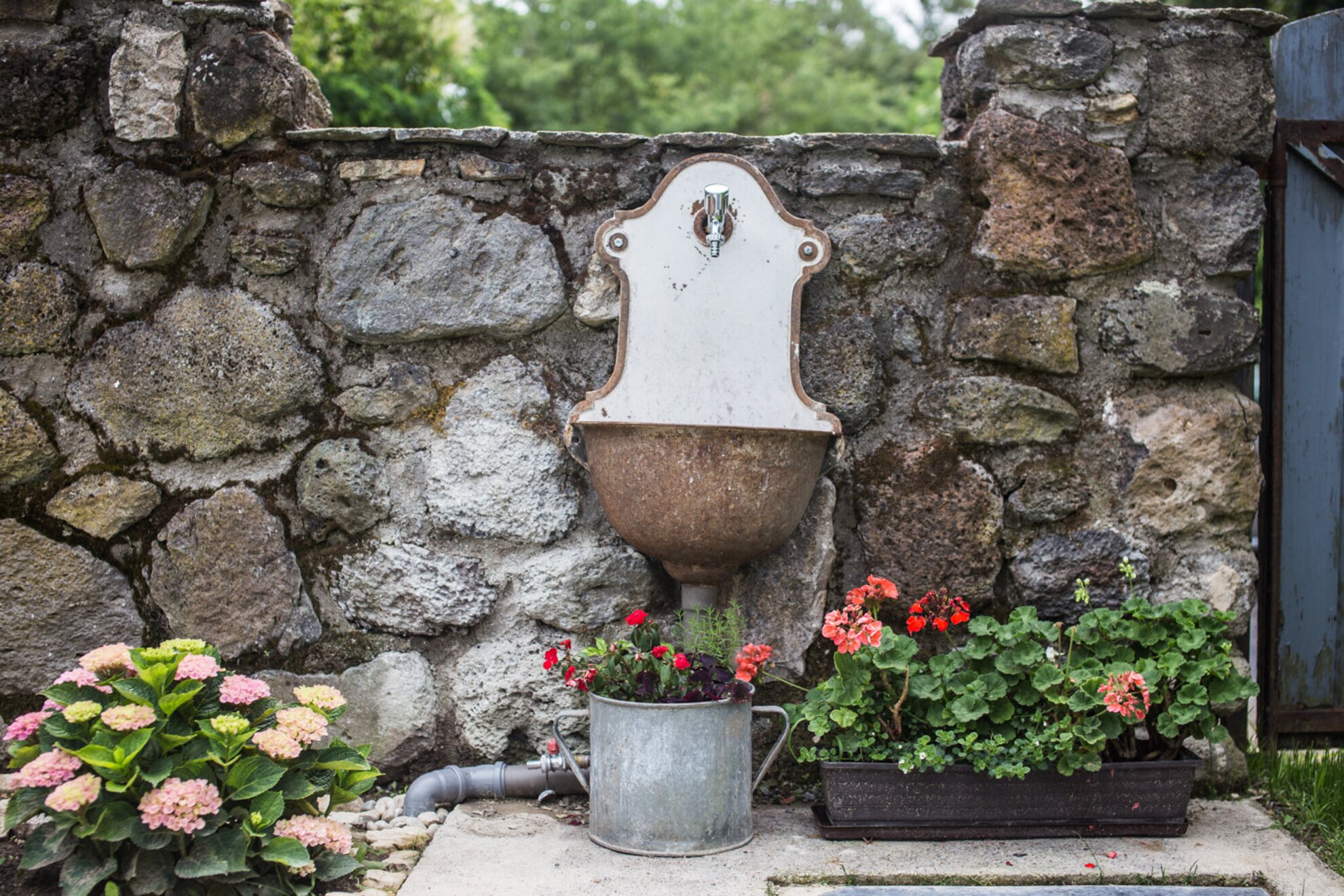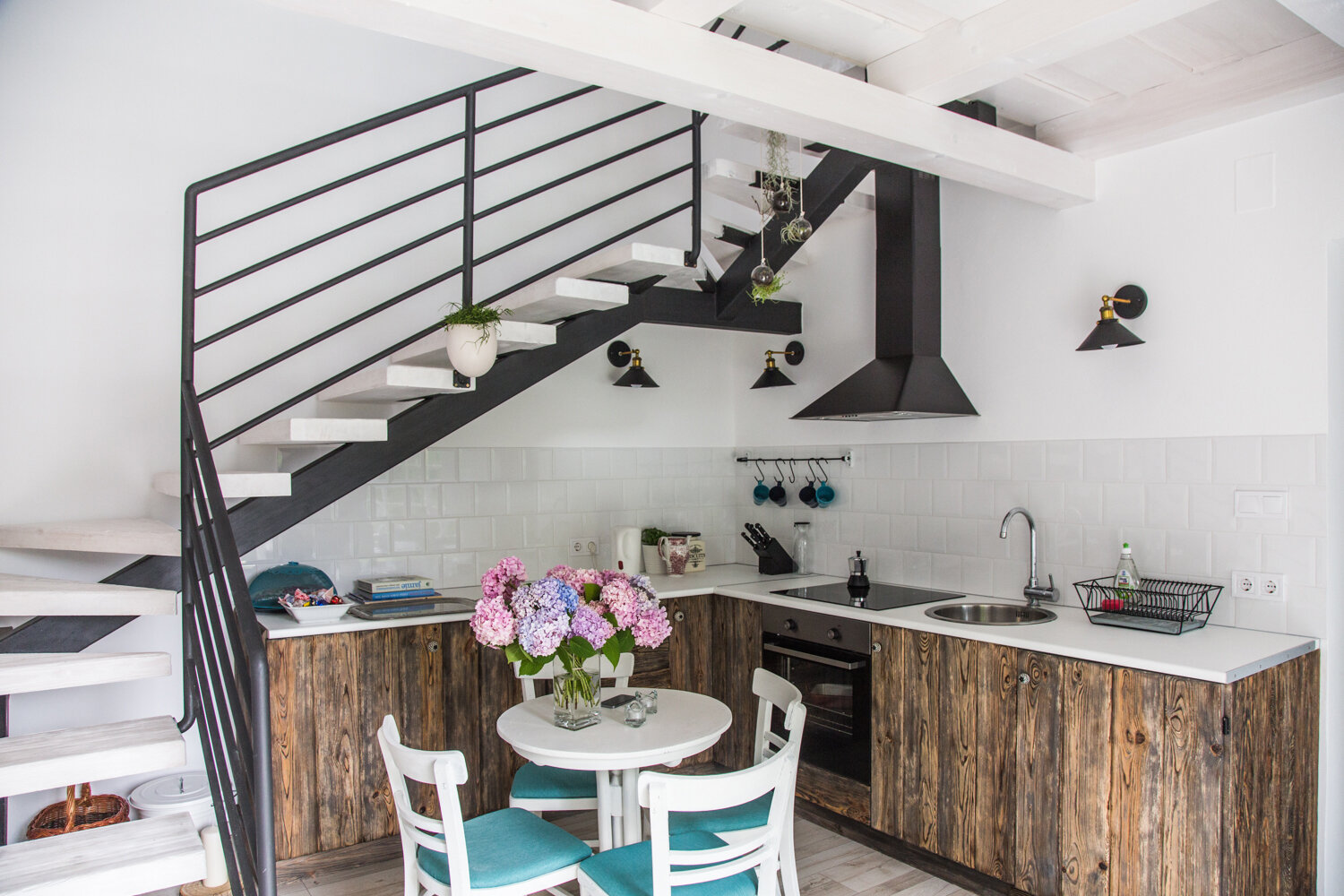“I bought this small vase in Füred five years ago,” points Laura on a white, vintage looking jug. “I already knew what the house would look like, and that it will be here on the table.” More and more people told us about this wonder-house in the works on the edge of Káli-medence. We were curious about the results, so we visited Laura Takács, whose story about the house is pretty much the same as it’s about the vase. She found one, she had a vision, and after many years of work, A nyaraló was born.
Located about eight kilometers away from Lake Balaton, Balatonhenye is a small village in Káli-medence (Káli Basin) with quiet streets, houses with porches, surrounded by stonewalls, gardens, and forests. Laura and Gábor have been spending their summers here for the past 16 years, and since their house was built, they are here on weekends during spring and fall as well. “We always had many friends visiting, and there’s not enough place for them in our house. When they were looking for accommodation in the area, there were only a few rental houses, or they only found houses where the owners simply left for summer, leaving everything behind. Nobody wants to move into those.”
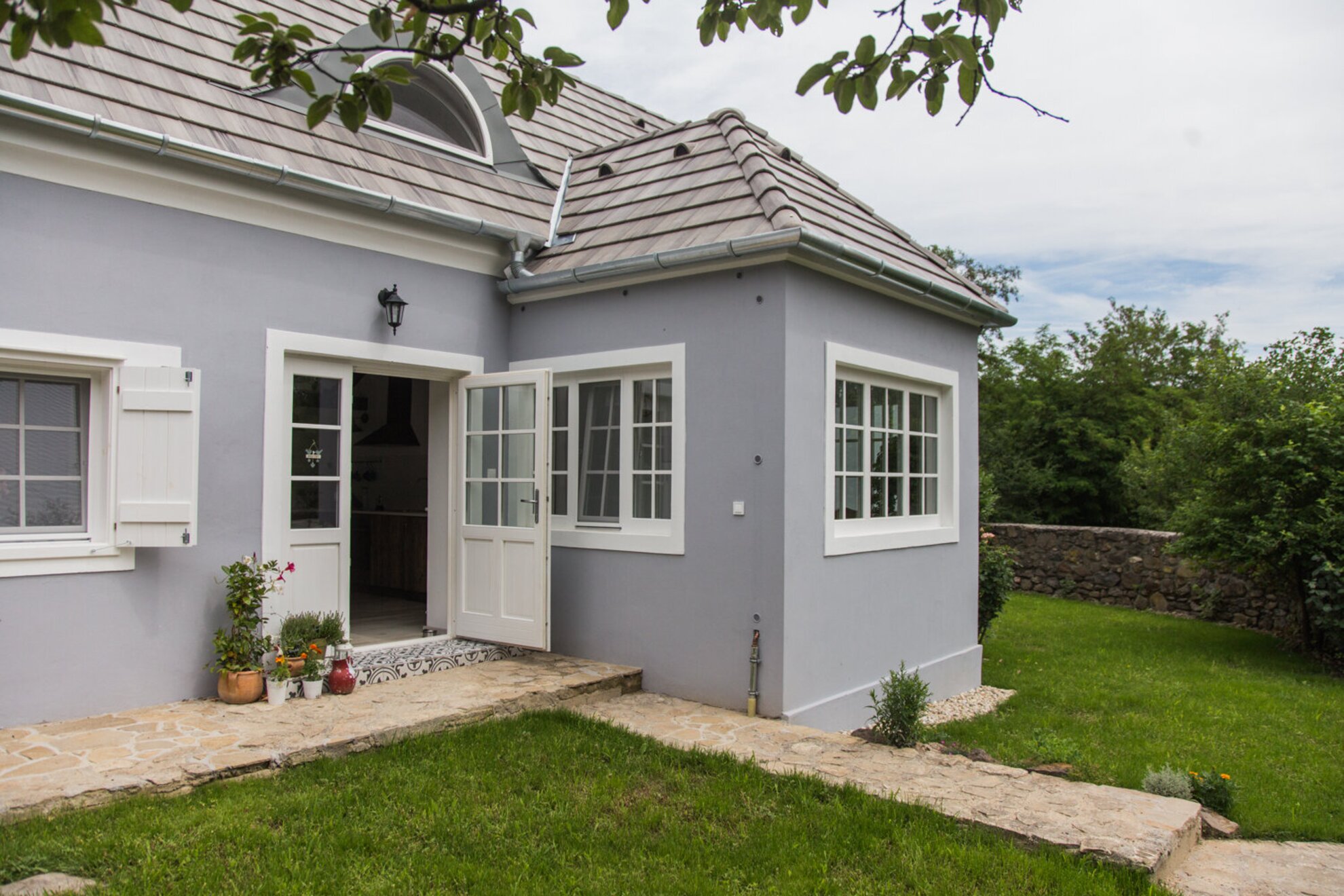
Straight from the garden
Every inch of A nyaraló (the name literally means “The Holiday Home”) is lovable, and that’s already enough to make us feel at home. Naturally, it will take time for the floor to get a bit worn, and there will be scratches, cracks, and fractures here and there, showing that people do live in the house, but Laura has no problem with that: a family already booked the place for the entire month of August. This is the goal: to give a holiday home for those who don’t have one; a place to come back to, a place to invite friends and family over to. “It’s a lot of trouble to maintain your own holiday home. It takes three hours to mow the lawn, another three hours to clean up, and another three hours to clean up again before you leave after the holiday. You can skip all of this here.”
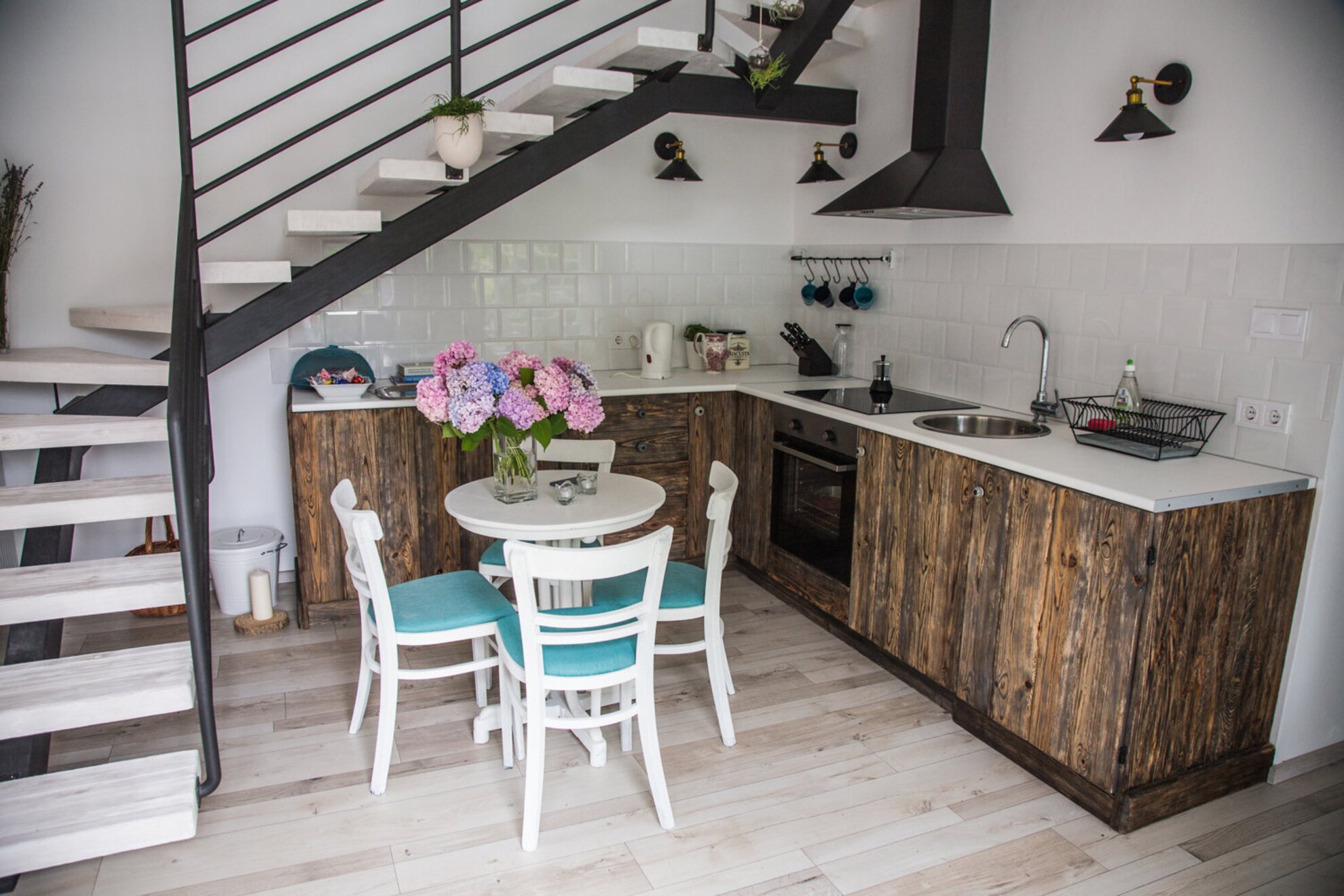
Their aim was to create a community of people who come back for a weekend in fall and then the next summer they know everything when they come yet again. They help with this: “We’ve spent every summer here in the past 16 years, I know where to buy the best sausage, who has the most delicious tomato, that Aunt Rózsika has the best eggs, because her chickens are there in her garden, I know how to order pastries at the shop from Tücsi in the mornings, and that there’s no better beach than the one at Ábrahámhegy if you’re going with children.” Laura also makes a booklet of programs for the guests with everything they might want to do while they are there, from festivals to places to visit, with things to try and buy. If there’s something to solve immediately, Laura and her family live in the same street so they come over and help.
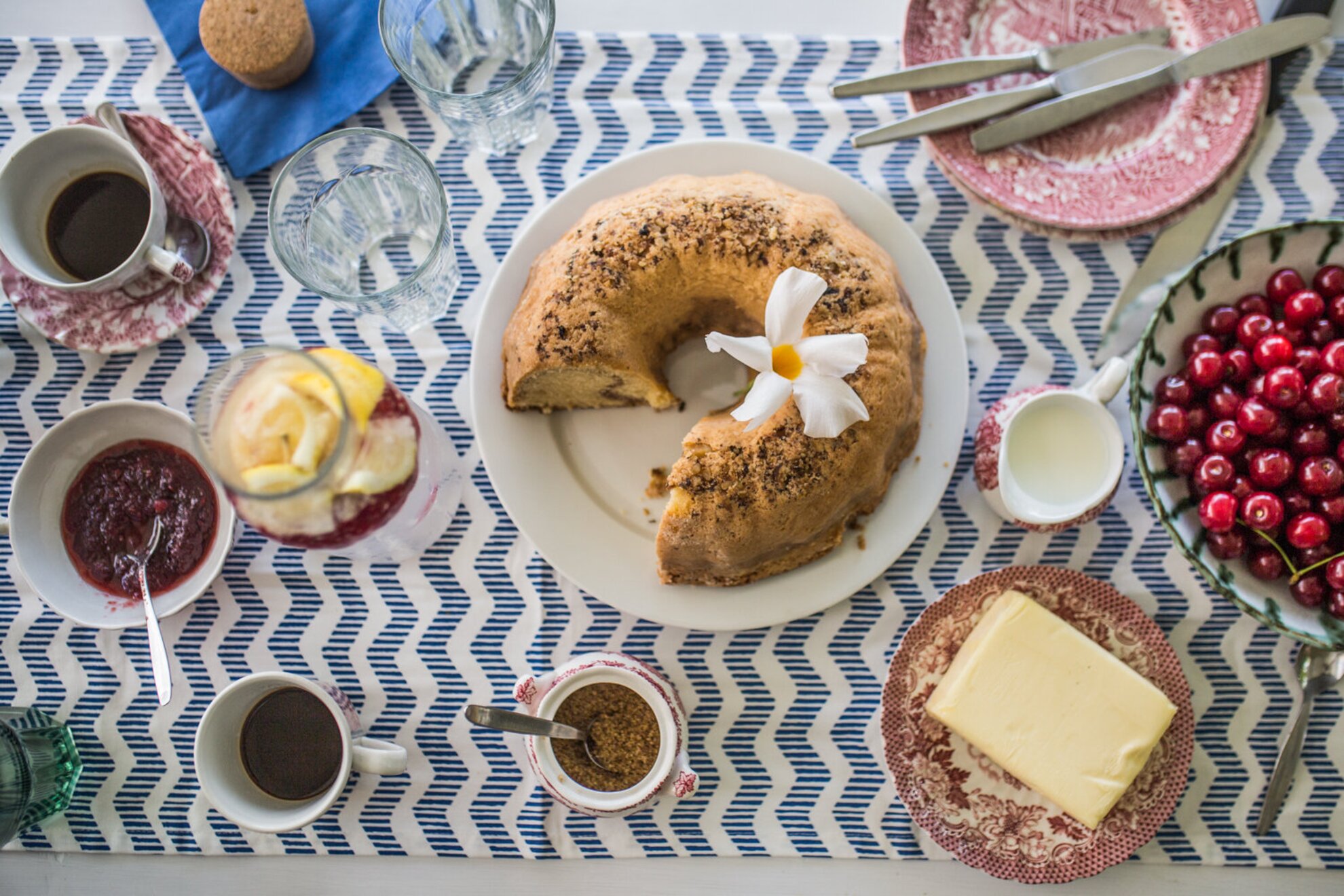
The Scandinavian Balatonhenye
They picked the house 10 years ago and bought it in 2013. Seeing the elegant, light-gray building, it’s hard to imagine that it used to be a miserable ruin of saltpeter. The color was gray originally as well, and they mixed 30 different samples by the time they finally found the same color. They created three rooms (including a children’s room, as the people who come here are mostly young parents with children), and a romantic nook for sleeping and cuddling where it’s pitch black with stars shining on the ceiling.
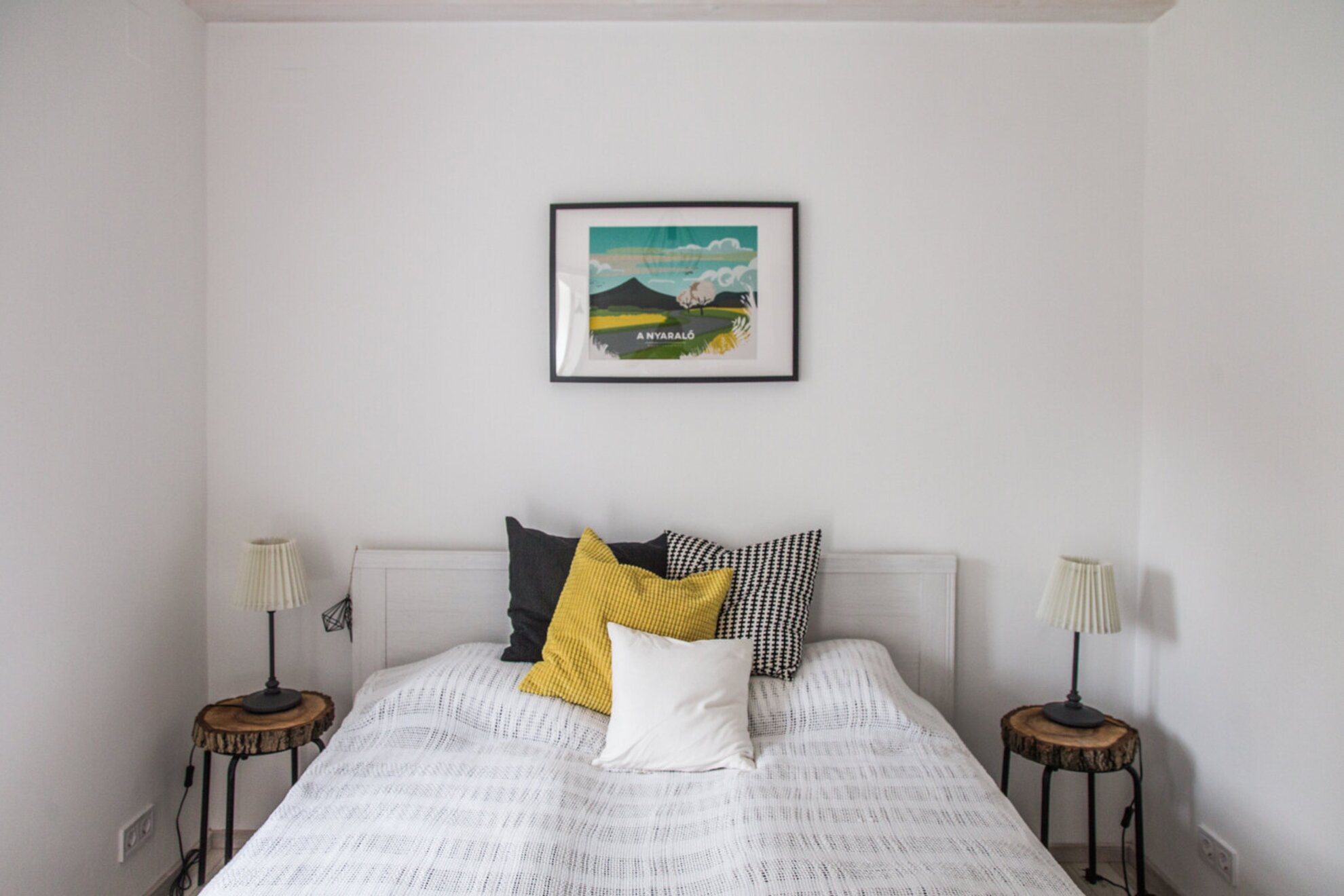
The furnishing is simple, pretty, and natural; those who love Scandinavian-styled homes – wood, light, natural colors and materials – will surely love the place. You can book the house for at least a week during the high season: it costs 40,000 forints for a night for eight people.
Balatonhenye on the wall, pétanque field in the woods
Although it isn’t her profession as she is an economist, people reached out to her with interior designer requests when she uploaded the pictures of A nyaraló to Facebook. She learned so many tricks and techniques during the years of refurbishment that she could easily start a new career. For example, if you want to find a solution to effectively darken a semi-circular roof window in a child-proof way, Laura has a suggestion.
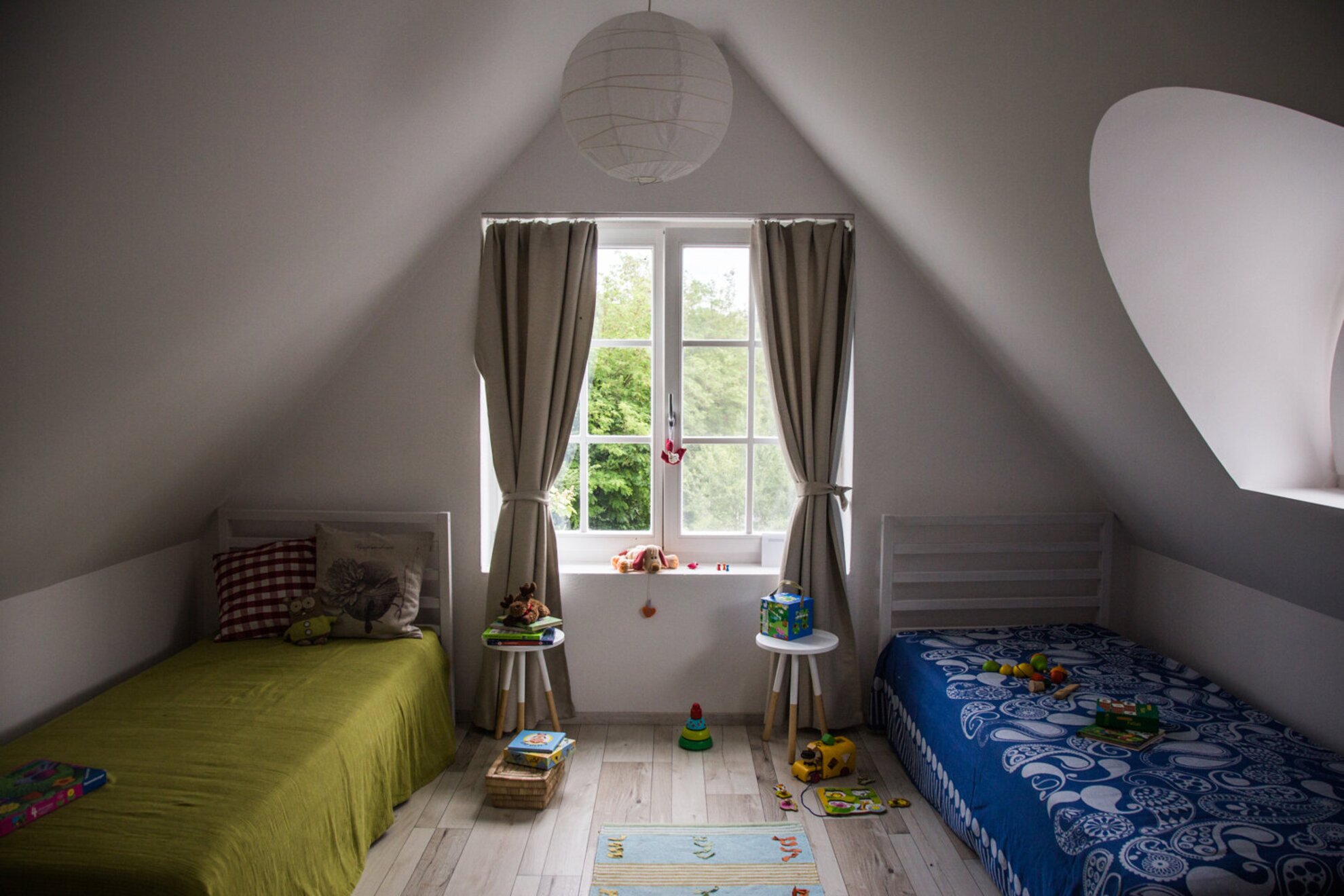
Many objects have a history here. The ancient, wooden radio is from Laura’s grandfather, while the cute, papier-mache horse and birds were made by her daughters, Izi and Zsófi. Laura proudly points at a simple coat rack that displays her skills that she learned at a distressing workshop. She painted the table, the benches, and the lamp as well. They got lamps, chairs, and other knick-knacks from here an there, from attics and markets. A graphics showing Balatonhenye hangs on the wall: it was made by artist Viktória Hitka, Laura’s friend, with whom she met here years ago.
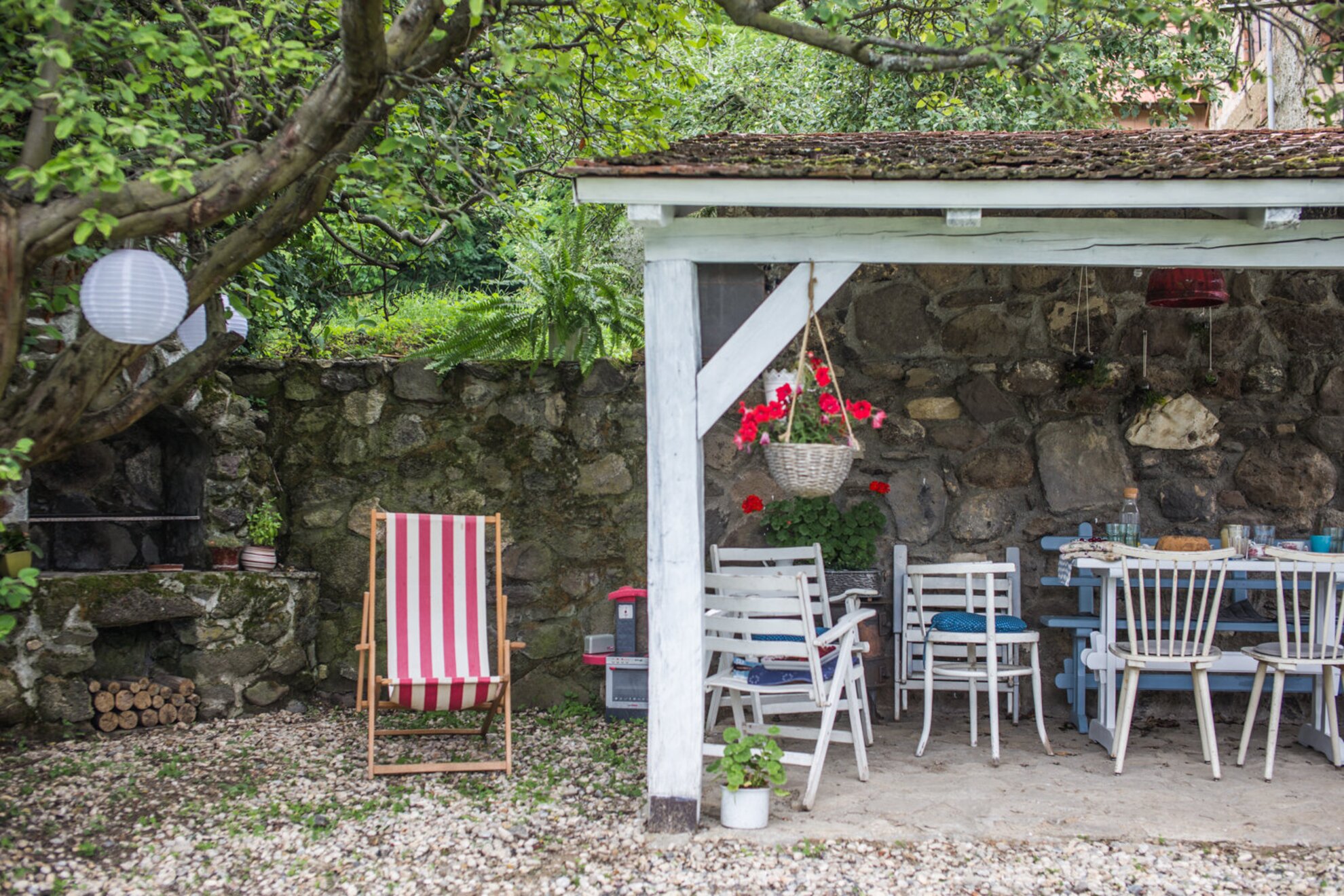
There’s a lush forest opposite the house, just outside the gates. They would like to make a pétanque field beneath the ivy-covered tree trunks, and Laura already has a vision of a small coffee and teashop under the trees when they’ll retire.
